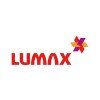Visual Inspector
Visual Inspector Interview Questions and Answers

Asked in SNL Bearings

Q. What is bearing and what are the different types of bearings?
Bearings are mechanical components that reduce friction between moving parts and support axial and radial loads.
There are several types of bearings, including ball bearings, roller bearings, and plain bearings.
Ball bearings use balls to reduce friction and support radial and axial loads.
Roller bearings use cylindrical, tapered, or spherical rollers to reduce friction and support radial and axial loads.
Plain bearings, also known as bushings, use a sliding motion to reduce fric...read more

Asked in Emcure Pharmaceuticals

Q. What's missing Visual Inspection
Visual inspection may miss subtle defects or abnormalities that are not easily detectable by the human eye.
Visual inspection may not be able to detect microscopic defects or abnormalities.
It may not be able to identify defects that are hidden or obscured by other objects or materials.
Visual inspection may not be able to accurately assess the quality or functionality of complex systems or components.
It may not be able to detect defects or abnormalities that are only visible un...read more
Visual Inspector Interview Questions and Answers for Freshers

Asked in Srinar Electronics

Q. What are visual defects?
Visual defects are abnormalities or imperfections in the appearance of an object or image.
Visual defects can be caused by various factors such as lighting, color contrast, or distortion.
Examples of visual defects include blurriness, distortion, color fringing, and pixelation.
Visual defects can affect the quality and clarity of images, making them difficult to interpret or use.
Visual defects can be corrected through image processing techniques or by adjusting the environment i...read more

Asked in Lumax Industries

Q. What is automobile?
An automobile is a motor vehicle designed for transportation on roads.
It typically has four wheels and an engine.
It is used for personal transportation, as well as commercial purposes.
Examples include cars, trucks, buses, and motorcycles.

Asked in Emcure Pharmaceuticals

Q. What defects can occur in the product?
Defects in a product can include manufacturing errors, design flaws, and quality control issues.
Manufacturing errors: Examples include missing parts, incorrect assembly, or faulty components.
Design flaws: Examples include poor ergonomics, inadequate safety features, or inefficient functionality.
Quality control issues: Examples include inconsistent product dimensions, subpar materials, or cosmetic defects.

Asked in CARS24

Q. What is the function of a differential?
The differential is a device that allows wheels to rotate at different speeds while driving on a curve or turning.
It helps to distribute power between the wheels
It allows for smooth turning and prevents tire wear
It is essential for four-wheel drive and all-wheel drive vehicles

Asked in Ahresty India

Q. How many types of steel
There are many types of steel, each with different properties and uses.
Carbon steel: contains varying amounts of carbon, used in construction and manufacturing
Alloy steel: contains additional elements like nickel or chromium for improved strength and durability
Stainless steel: contains chromium for corrosion resistance, commonly used in kitchen appliances and medical instruments
Tool steel: designed for making tools, with high hardness and wear resistance

Asked in SNL Bearings

Q. Function of gearbox?
The gearbox is a mechanical device that transmits power from an engine to the wheels.
It changes the speed and torque of the vehicle's wheels.
It allows the engine to operate at an optimal speed range.
It can be manual or automatic.
It can have multiple gears for different driving conditions.
Examples: manual transmission, automatic transmission, continuously variable transmission (CVT).
Share interview questions and help millions of jobseekers 🌟


Asked in Ahresty India

Q. What is tolerance?
Tolerance refers to the acceptable range of variation in a measurement or dimension.
Tolerance is the maximum allowable difference between the actual measurement and the desired measurement.
It is important in manufacturing to ensure that parts fit together properly.
For example, if a hole is supposed to be 1 inch in diameter with a tolerance of +/- 0.005 inches, the actual hole diameter can range from 0.995 inches to 1.005 inches.
Interview Questions of Similar Designations
Interview Experiences of Popular Companies





Calculate your in-hand salary
Confused about how your in-hand salary is calculated? Enter your annual salary (CTC) and get your in-hand salary


Reviews
Interviews
Salaries
Users










